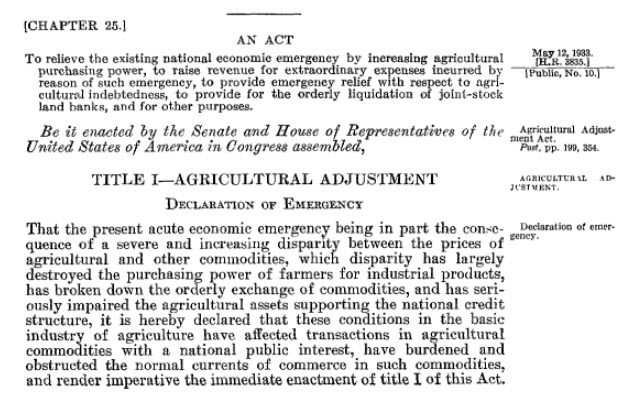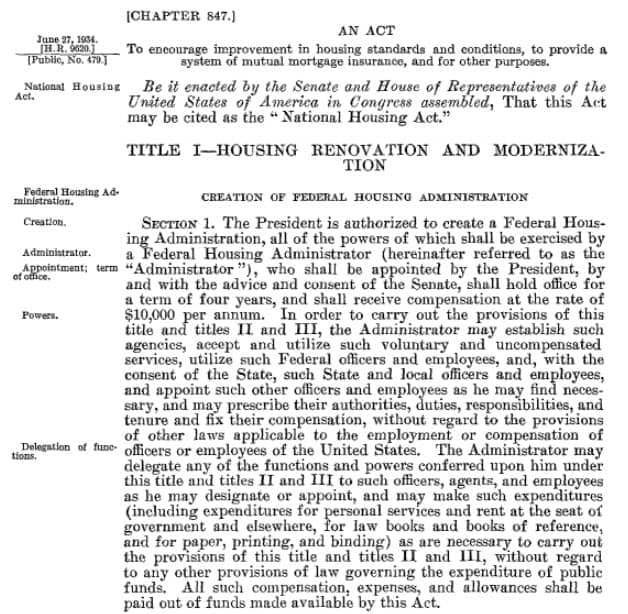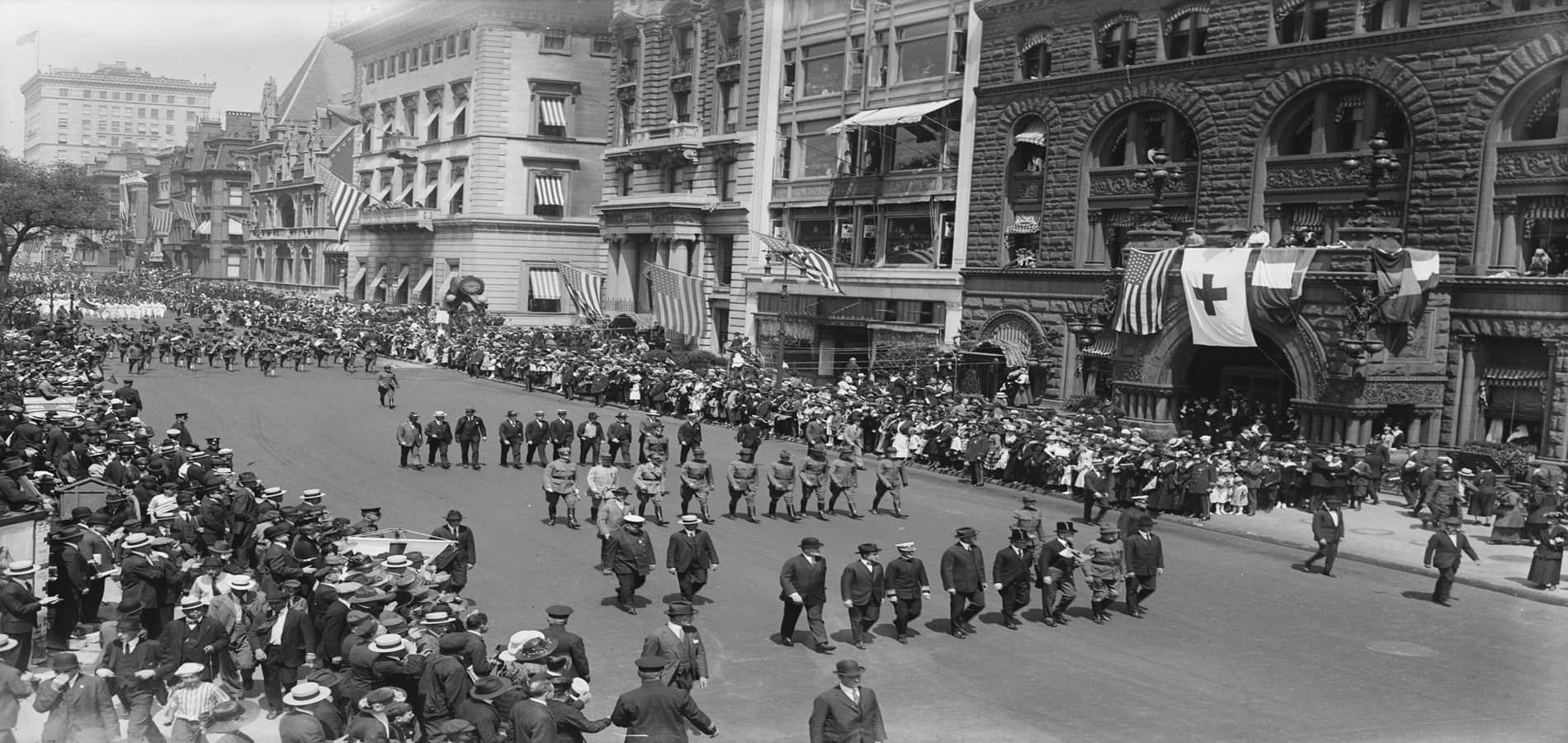The late 1920s and the 1930s witnessed the longest and most severe economic downturn the industrialized Western world had ever seen. Brought about by numerous factors—including a four-day stock market crash, banking panic and failures, and the use of the gold standard—the Great Depression caused a substantial decline in employment, wealth, output, gross domestic product (GDP), and more in numerous countries across the globe.
In the United States, recovery from the decade-long depression was primarily helmed by President Franklin D. Roosevelt, who pledged “a new deal for the American people” even before assuming the presidency. This promise soon became the namesake of a series of social programs, financial reforms, federal regulations, and public works projects enacted by the Roosevelt administration between 1933 and 1939.
On this anniversary of FDR’s inauguration, join HeinOnline in rediscovering some of Roosevelt’s most influential (and controversial) New Deal legislation and programs.
The First New Deal (1933-1934)
Roosevelt’s first New Deal package was intended to address the most immediate and urgent needs of the United States by creating jobs and establishing a system to provide welfare to Americans in need.
1. Emergency Banking Relief Act (1933)
In his first few days as President, Roosevelt attempted to stabilize the U.S. banking system in response to the national banking crisis. The passage of this act gave Roosevelt emergency power over U.S. banks, under which he called for a “bank holiday” to close all banks until they became certified for reopening under federal supervision.
2. Civilian Conservation Corps (1933)
This voluntary relief program was established by the Emergency Conservation Work Act to help young, unemployed, and unmarried men find work. The program provided jobs such as planting trees, restoring forests, creating recreational outdoor areas, and more to promote the conservation of natural resources on government-owned land. During its nine-year run, the program provided approximately 3 million men with shelter, food, clothing, and a regular salary.
3. Agricultural Adjustment Act (1933)
To further stabilize the failing economy, this federal law limited agricultural production to reduce surpluses and therefore increase prices. Under this law, the government paid farmers not to plant on their land and to slaughter excess livestock. Though the act did accomplish its goal of increasing prices, the Supreme Court ruled it unconstitutional in United States v. Butler.

4. Tennessee Valley Authority Act (1933)
This act was passed to modernize and provide relief to the Tennessee Valley, a region severely impacted by the Great Depression. The construction of dams, creation of controlled flooding, and use of hydroelectricity were among some of the improvements that led to the agricultural and industrial development of this area.
5. National Industrial Recovery Act (1933)
This labor law was intended to stimulate economic recovery by allowing the president to regulate the wages and prices for a range of industries in the interest of fair competition. It also established the Public Works Administration (PWA) to head the construction of large-scale government-funded infrastructure projects. Widely criticized by businesses, NIRA was ultimately ruled unconstitutional in A.L.A. Schechter Poultry Corp. v. United States. View the legislative history of the act in HeinOnline’s U.S. Federal Legislative History Library.
6. Public Works Administration (1933)
Created by the failed National Industrial Recovery Act, this agency invested more than $3 billion in public works projects such as bridges, dams, schools, and hospitals, ultimately providing jobs and partially reviving the economy. Among the PWA’s successful projects are the Lincoln Tunnel and the Hoover Dam.
7. Securities Exchange Act (1934)
This piece of legislation regulated the trading of securities on the secondary market (i.e. stocks, bonds, and debentures) to facilitate financial transparency and better circumvent fraud. To enforce the law, the act further established the Securities and Exchange Commission (SEC). View the legislative history of the act in HeinOnline’s U.S. Federal Legislative History Library.
8. National Housing Act (1934)
To make housing more affordable, curb increasing bank foreclosures, and stimulate the private housing industry, this act established the Federal Housing Administration (FHA) and the Federal Savings and Loan Insurance Corporation (FSLIC). View the legislative history of the act in HeinOnline’s U.S. Federal Legislative History Library.

The Second New Deal (1935-1936)
The Second New Deal was considered much more liberal, and therefore more controversial than the first, focusing on nationwide reform with programs to redistribute wealth, income, and power.
9. Works Progress Administration (1935)
Created with the passage of the Emergency Relief Appropriation Act, the WPA was the largest of all agencies established under the New Deal. The administration returned millions of unemployed citizens to work primarily with construction projects for new buildings and roads. In one specific venture known as Federal Project Number One, the WPA invested $27 million in the employment of thousands of artists, musicians, writers, and actors.
10. National Labor Relations Act (1935)
This labor law has now become a foundational piece of legislation, guaranteeing the right of private-sector employees to organize into unions, collectively bargain, and engage in strikes. Additionally, the act further defined unfair labor practices such as employer interference with labor unions and the creation of unjust working conditions. Though its constitutionality was called into question, the act was upheld in NLRB v. Jones & Laughlin Steel Corp. View the legislative history of the act in HeinOnline’s U.S. Federal Legislative History Library.
11. Social Security Act (1935)
This landmark act created the Social Security system still in effect in the United States today. The main stipulation of the original act was to pay financial benefits to retirees over age 65 based on lifetime payroll tax contributions; it also provides financial assistance to the handicapped and the unemployed. Social Security income is estimated today to have reduced poverty in Americans 65 and older to below 10%. View the legislative history of the act in the U.S. Federal Legislative History Library, and then read more about the passage of the Social Security Act.

12. Fair Labor Standards Act (1938)
Originally drafted in 1932 by Senator Hugo Black, the FLSA is another significant piece of labor legislation that created the right to a minimum wage, the 8-hour work day and 40-hour work week, and overtime pay at a rate of 1.5 times an employee’s regular rate. Additionally, the act outlawed many forms of child labor. View the legislative history of the act in HeinOnline’s U.S. Federal Legislative History Library.
Bonus Resource: The Public Papers of FDR
Now that you’ve learned about some of the historic legislation enacted by the Roosevelt administration, read the words of Franklin D. Roosevelt himself about these programs.
Use the Public Papers and Addresses of Franklin Delano Roosevelt to see if you can find the relevant speeches, statements, and other addresses relating to FDR’s influential work. Good luck, and happy researching!

Even More Information
Looking for more resources about FDR’s New Deal? See a list below of featured titles relating to this research topic.
Related Feature Titles
First Chapter of the New Deal
1v. Chicago: J.A. Prescott & Son, 1933
New Deal in Court (with a Digest of Decisions)
1 v. Philadelphia: G.T. Bisel, 1935
New Deal: Revolution or Evolution (Rev. ed.)
1v. Boston: D. C. Heath and Co., 1959
Banking and the New Deal
1 v. Chicago, Ill: University of Chicago Press, 1935
Lessons from the New Deal: Hearing before the Subcommittee on Economic Policy of the Committee on Banking, Housing, and Urban Affairs, United States Senate, One Hundred Eleventh Congress, First Session
Washington : U.S. Govt. Print. Off., 2009
Constitution and the New Deal
1v. Washington: American Liberty League, 1935
NRA Economic Planning
1v. Bloomington, Ind: Principia Press, 1937
Black Culture and the New Deal: The Quest for Civil Rights in the Roosevelt Era
1v. Chapel Hill: University of North Carolina Press, 2009
Deal and Foreign Trade
1v. New York: Macmillan Co, 1935
Supreme Court and the New Deal: A Study of Recent Constitutional Interpretation
1v. Rosemead, California: Rosemead Review Press, 1940
Bibliography of Selected Materials relating to the Legislation of the New Deal
1 v. Seattle, Wash: University Book store, 1935
Guide to the Official Publications of the New Deal Administrations
1v. Chicago: American Library Association, 1934
NRA, the New Deal for Business and Industry: A Bibliography, May-August, 1933
1v. Chicago: American Library Association, 1933
Labor under the New Deal: A Selected Bibliography
1 v. Berkeley: s.n., 1934
Subscribe to the Blog
Want more great content? Get posts like these sent directly to your inbox when you subscribe today.



